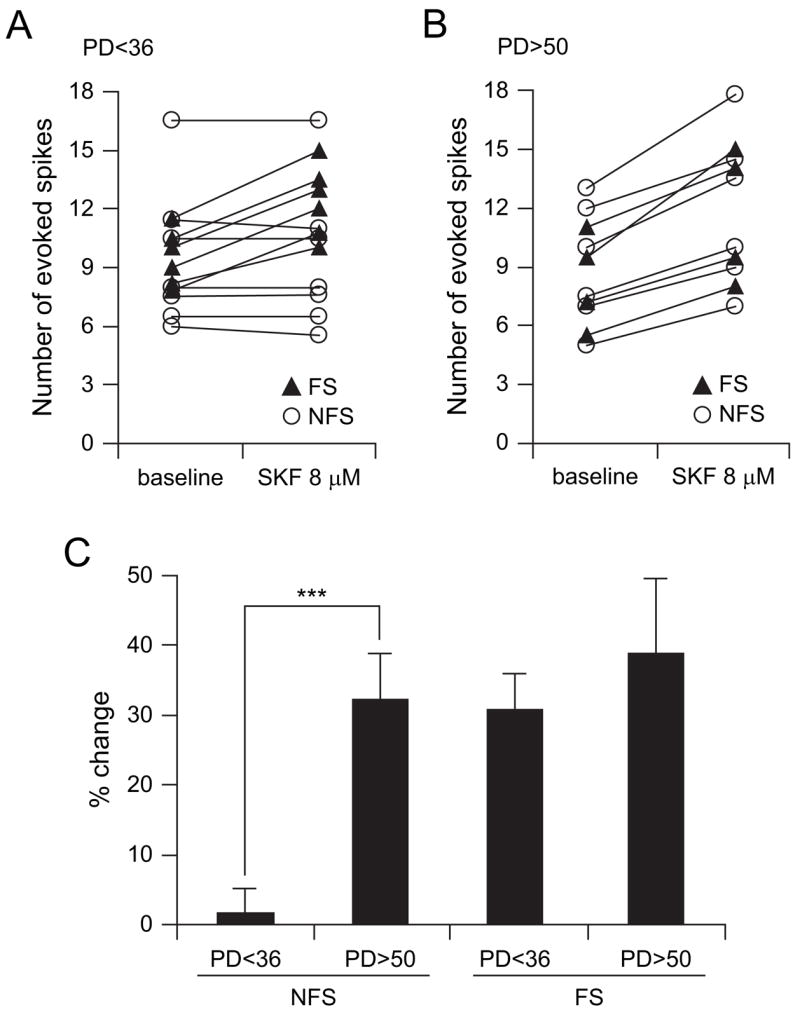Figure 5.

The D1 agonist SKF38393 increases interneuron excitability in the adult PFC. (A) Scatter plot showing the effect of 8 μM SKF38393 on FS (black triangles) and NFS (open circles) interneuron excitability, assessed with the number of spikes evoked by intracellular current pulse injection, in slices from prepubertal (PD < 36) animals. Bath application of 8 μM SKF38393 increased the number of evoked spikes in all FS (n = 6) interneurons, whereas not apparent changes were observed in NFS (n = 7). (B) Scatter plot illustrating changes in FS- and NFS-evoked spikes induced by the D1 agonist in slices from young adult animals (PD > 50). Both FS (n = 4) and NFS (n = 6) interneurons exhibited similar increases in neuronal excitability. (C) Bar graph (mean ± SD) summarizing the effect of SKF38393 on pre- and postpubertal PFC FS and NFS interneuron excitability, expressed as percent change from baseline. PFC NFS interneurons acquire a D1 modulation only after adolescence (***P < 0.0001, student’s t-test).
